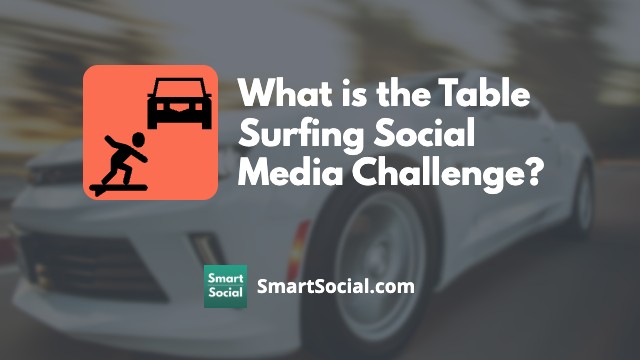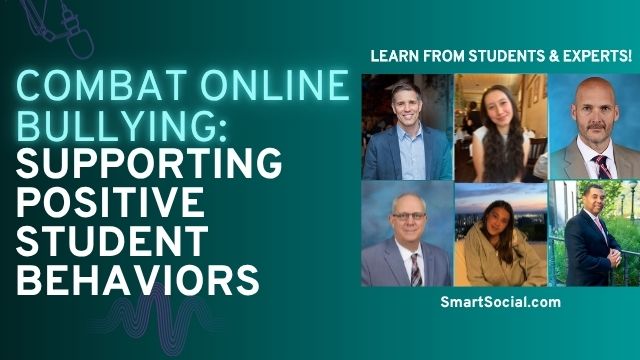Identifying Bullying Tactics: 5 Experts Weigh In
Green Zone App
(Click here to learn more)
Dangerous Social media challenge
(Click here to learn more)
Red Zone App
(Click here to learn more)
Gray Zone App
(Click here to learn more)

Bullying these days can come in many forms and is no longer just a physical act. With all of the social media platforms and apps available, cyberbullying is running rampant. So, we asked 5 experts to share stories of how schools, parents, and educators can identify and help students manage bullying and its impact.
Students need to be taught that what bullies say or do to them is not their fault, but rather a reflection of the pain the bully is feeling. Let your student know that you will never laugh at them or blame them for being bullied when they need to share what is happening to them at school or online.
1. Create open communication within the student-parent-teacher relationship triangle

Sylvia Hall, Founder, GAB-on!
Bullying takes many forms including physical, mental, and emotional, and is both visible and ‘invisible’. As students grow up and interact with their peers more on social media, through other electronics, and less on the playground, their relationships can change and shift dramatically or can disintegrate altogether. A student’s mental health is developed and strengthened through the relationships they have and communicating on social media can wreak havoc with many student’s sense of self and confidence. A student’s relationship with their family, trusted adults, mentors, and friends is paramount to their emotional health.
Consistent, open communication within the student-parent-teacher relationship triangle is critical. However, what’s often missing in that communication is the student’s inclusion. Include students in conversations about school, their home life, and everyday life.
The real magic is when conversations about small moments in school lead to bigger conversations at home. If a student shared, “I have invisible armor that I have to wear in class” the parent or teacher could continue the discussion to find out why the student feels that way. Having a conversation about “armor” opened a door for the student to be able to share his story, to make the parents aware, and for the family to take the next steps.
The consistent parent-student conversations about a student’s day, perspective, and experience build family connectedness. And it is family-connectedness that is the foundation for a student's mental health, social and emotional well-being, academic achievement, and to recognize their future possibilities.
2. Emphasize core values and clear behavior expectations

Lois McGuire, Retired Superintendent of Schools from New Jersey, Author of Don't Be That KID!
Students don’t become bullies in middle or high school. It is a learned behavior that begins before students start school and is reinforced throughout elementary school. That is why it is imperative for parents, grandparents, and educators to place more emphasis on core values and always establish clear behavior expectations.
Throughout my career, whether I was an elementary school teacher or a Superintendent of Schools, I always told parents, “I would rather your student was an ‘A’ person rather than an ‘A’ student.”
Many parents place more emphasis on their student’s academic performance instead of whether or not they are kind, considerate, and respectful to others. I believe the above three character traits, for example, can be learned. Students, at an early age, must be taught kindness, acceptance, and inclusion. They are skills that can be learned like any other skill.
3. The hardest thing to remember is that being bullied is not your fault
Lynda Fairly, Co-founder, Marketing, Numlooker
I had a friend who was being bullied at school as she was a unique student with some learning disorders. The administrator had seen this happening before and found a way to diffuse the situation before it escalated into violence. He showed up at the school after classes were over and talked with the other students about what happened with my friend. He could get them to see that my friend only wanted to be their friend, but they kept pushing her away.
He also talked with the bullies about the dangers of bullying and how it has ultimately caused people to commit suicide. The administrators then re-iterated the bullying prevention policies in school to the mass. Students, parents, and educators were provided with full knowledge of what the procedure entails after that incident.
Bullying these days can be verbal, social, or physical. It can be cyberbullying or even mute bullying. Students these days are verbally abused in person or behind their back, but now more than ever, are being abused online. Students can be hurt by negative comments which can damage their beliefs and feelings about themselves. This can also occur when someone tries to physically intimidate a student in public places such as school or a community center.
Some tips for students if they are feeling that others are bullying them:
- Never take the bullies' words personally because what they say is never true
- Do not threaten back as this will only make the situation worse
- Go out with friends and make sure you have a sound support system to help you feel safe
- Talk to your parents (or another trusted adult) about what is going on at school and ask for help if needed. Also, talk to a teacher or other trusted adult about what is happening
- If you are being bullied, it is not your fault, and you don't deserve the negative attention
4. Create a safe, inclusive environment for all students

Brigida Aversa, Chief Operating Officer and Co-founder of Tiny Hoppers
For young students, bullying can be identified if an individual is being left out of the group regularly. The person being bullied might be disinterested in activities and participating in social activities.
A common theme in bullying is if there seems to be a ringleader in a friend group. Often that person is the one that is the boss, and everyone has to follow them or do what they say. Bullying is usually targeted towards an individual to make them feel less or isolated.
One of the ways that students can avoid bullying is to teach students to be more confident, assertive and let go of any victim thinking. Bullying is a tactic to make someone else feel less and insecure, which encourages further bullying down the line.
One of the most critical responsibilities of an educator is to make a safe space for each student. As students continue to grow, they are extremely sensitive and vulnerable as people, so it is super important to establish good relationships with students by not showing favoritism in the classroom and ensuring everyone feels included.
5. Help students focus on confidence in oneself; a trait that bullies fear
Patrizia Pisani, Editor, Vionix Studio
Bullying can have lasting negative impacts on a student. The best way to avoid bullying at school or anywhere is self-confidence.
Be confident and stand for yourself. Never answer with violence but do tell the bully you do not want to engage with respect and authority.
You are in school so why not develop strong friendships with other classmates? You are more prone to bullying if you are lonely. However, having friends does not mean that you engage in fights or talk-backs. Recognize bullies, their usual hangout spots, and stay away from them.
More tips
We sat down with Brian Taylor who has been working in education and safety for over 18 years. At Vector Solutions, Brian focuses on innovative technology solutions that help create safer more inclusive schools and solve complex education-related problems. Along with Brian Taylor, we sat down with Dr. John Mayer who is a Clinical Psychologist and leading expert on teens and families, to talk about bullying.
Listen along on our podcast
Key takeaways about bullying prevention
- Students tend to believe that telling an adult about a bully is tattling. However, telling an adult is a part of the resolution.
- The social and emotional effects of bullying can be just as traumatizing, if not more so, than physical bullying.
- Ensure that kids in your community know that adults will care, take action, and do something if they are being bullied.
Myths about bullying
Too many people have been conditioned to the fact that if they report something; they're being a snitch. With bullying, to resolve the problem, it's important the people know. The myth is telling on someone is bad; when in fact it is part of the problem resolution. The other myth is that bullying is only physical. Bullying takes a lot of different forms. In this age of social media, we need to help kids understand that the social and emotional effects can be as traumatizing if not more than physical bullying. –Brian Taylor, Vector Solutions
There's a car dealer commercial that starts out with "everybody knows you have to stand up to the bully." Wrong! You are not a narc or a tattletale if you tell somebody. The best thing to do is tell an adult who's in charge. This is another message that we need to get to kids that are victims of bullying; it's not you. There's something wrong with that other person. By telling a person in charge, you're helping that person, you're helping them to do something better. –Dr. John Mayer, Clinical Psychologist and Teen Expert
Ignoring the problem, it's a nature of human tendencies to want to ignore something and hope that it goes away. Bullying situations tend to get worse. By acting on the concerns and telling an adult, that's the constructive way to address it. Like an ostrich putting its head in the sand, it doesn't make it better. Do more than telling an adult. You should get a sense that action is being taken. Bullying is not only physical. There are a lot of types of bullying, it may be social, emotional and sexual. For students online, cyber bullying is ever present. There are three conditions that make bullying. One, harm being done. Two, there is an unfair match. Three, it is being repeated. In cyber bullying, it gets repeated fast with a wide circle of folks. This can be damaging to an affected student. –Brian Taylor, Vector Solutions
How can we encourage students to tell an adult if they encounter bullying?
As parents and educators, we want kids to know that they can go to adults and will not be dismissed. We need to let them know that we care, we'll take action and we'll do something. –Dr. John Mayer, Clinical Psychologist and Teen Expert
Tips for anonymous bullying?
One thing that a student can do is watch out for other students. One of the most effective means of bullying is bystander intervention. Kids in anonymous environments don't stand up for themselves. Just because it's online, it's anonymous doesn't mean you can't talk about it. You can intervene and remain anonymous. New state laws protect the anonymity of a student looking out for another student. –Brian Taylor, Vector Solutions
It is a form of helping when we tell an adult what is going on. We get the bystander phenomena because kids don't want to get involved, they don't want to have repercussions. We've got to let them know that this is about helping someone in your community. If you discover your child is a bully; it doesn't mean your child is going to be a criminal when they grow up. It is at this point in their life they have maladaptive socialization. As a parent, don't bury your head in the sand like an ostrich and not accept the fact that your kid is bullying someone. –Dr. John Mayer, Clinical Psychologist and Teen Expert
How can parents and educators talk to kids about bullying?
If you're a parent or a teacher, you have to think of informing your students in age-appropriate ways. It is important to be balanced as you talk about the problem of bullying. Don't alarm and terrify. Remind students, it's okay to speak up. –Brian Taylor, Vector Solutions
Share tips for parents and educators on how to see the signs of a bully
Parents and teachers need to look inside themselves, how are we presenting ourselves as adults. Kids look at adults as models. First, look at yourself and look how you're presenting yourself because those kids are looking at you. Second, how we are going to interface with the person who is doing the bullying? Don't reinforce behaviors that are along that continuum of being a bully. Look at how you are reinforcing the behavior in the bully. You need to step in when you see a bully do these things and give consequences for it. –Dr. John Mayer, Clinical Psychologist and Teen Expert
What are some frequently asked questions about bullying?
The biggest one that I see is that we feel helpless towards this. I want to go back and introduce that phrase earlier "peer pressure". Nothing that I can do as a parent because once they're out of my eyesight the peer group takes over. That's a huge myth for parents. We are still powerful entities in children's lives. Don't ever forget that. –Dr. John Mayer, Clinical Psychologist and Teen Expert
How can parents protect their kids from bullying?
Every kid is vulnerable to bullying but certain populations are at more risk that others. Students with disabilities are more prone to being bullied than their more enabled peers. If you're looking out for friends; look out also for those students with disabilities and LGBT students. For students and parents alike, you've got to see yourself as a member of a community. It doesn't mean that all bullies are bad. A lot of times it can be indicative of an emotional behavior disorder or something else. First step of resolution is speaking up and making sure that the target or victim of bullying is protected. –Brian Taylor, Vector Solutions
Conclusion
Each student is different. Bullies will test their targets to find what affects them most and capitalize on it. Speaking up about bullying is embarrassing to students, so never stop checking up on your student to make sure they’re okay. If you have done everything you can to resolve the situation and nothing has worked, or someone is in immediate danger, there are ways to get help.

If you or someone you know is in an emergency, call or text the Suicide & Crisis Lifeline at 988 or call 911 immediately. If you’re uncomfortable talking on the phone, you can also text HOME to 741-741 to be connected to a free, trained crisis counselor on the Crisis Text Line.
Protect your family and enter for a chance to win cool prizes
Become a member or log in to learn more on this topic
Protect your family and enter for a chance to win cool prizes

., start learning from this page to earn points!*
Hello, I'm Josh, the founder of SmartSocial.com.
Don't leave this page until you fill out our feedback form that will appear after you learn from the resources...
Become a Very Informed Parent (VIP) to get our social media suggestions in your email every Tuesday & Thursday.



Hello, I'm Josh, the founder of SmartSocial.com. Protect your family by taking my 1 minute quiz
This quiz will help you understand how safe your family is


Schools & Districts: Partner with us to protect your community online
Our remote presentations (and website) teach over a million parents and students each year how to be safe so they can shine online. We teach students how their accounts can be used to create a portfolio of positive accomplishments that impress colleges and employers.


Join Our Smart Social Podcast
each week on iTunes
With over 500 episodes, Josh Ochs interviews psychologists, therapists, counselors, teachers, and parents while showing you how to navigate social media to someday shine online.
Listen on:



.jpg)
.jpg)
.jpg)


